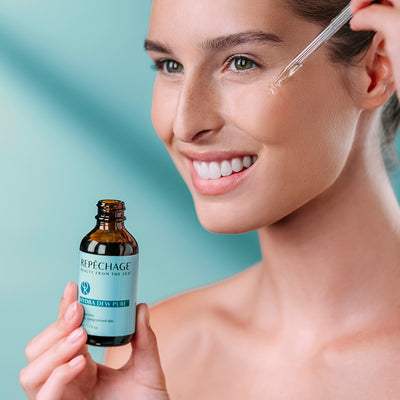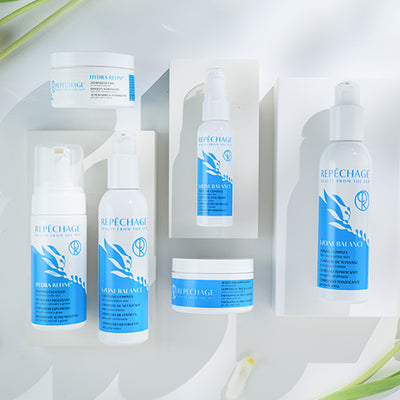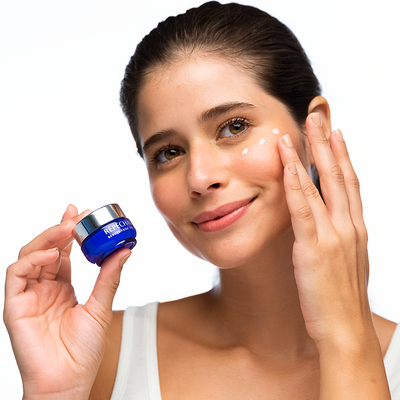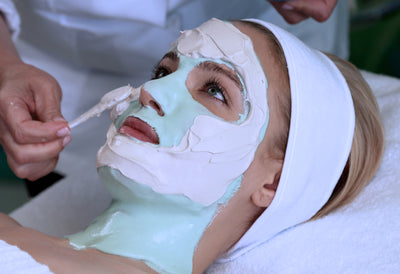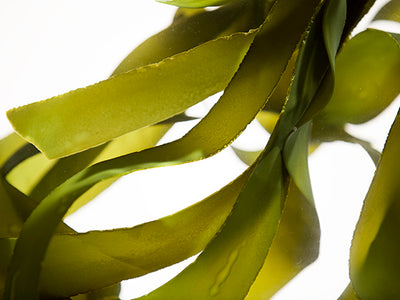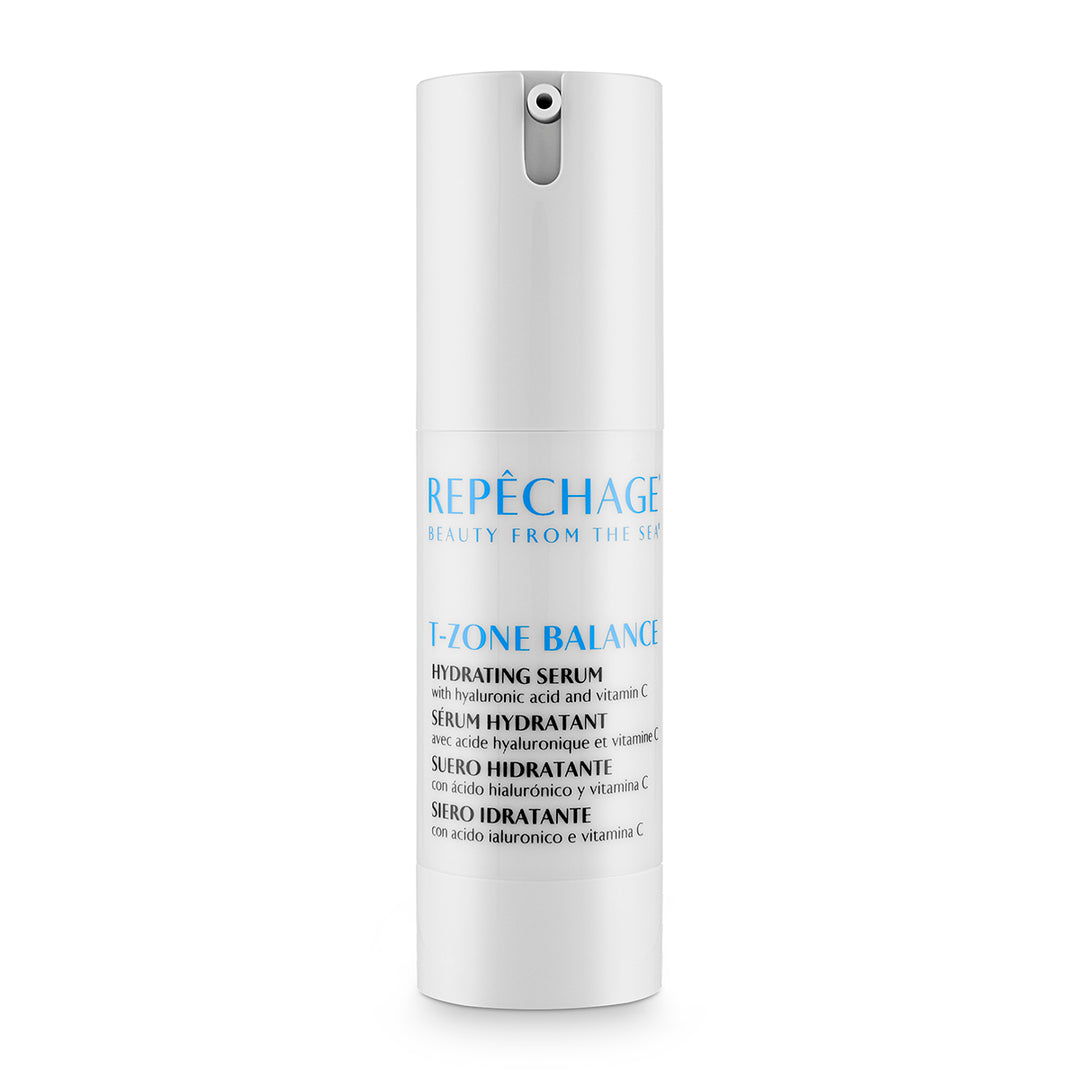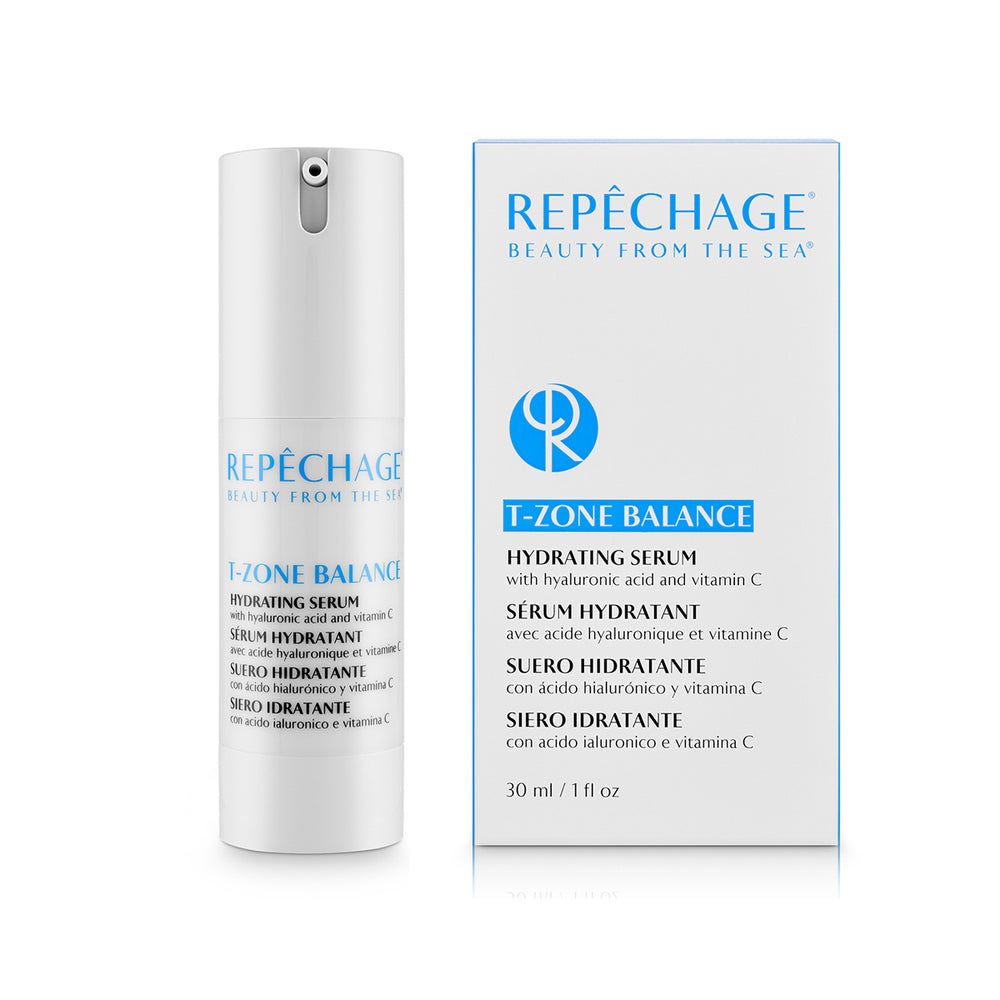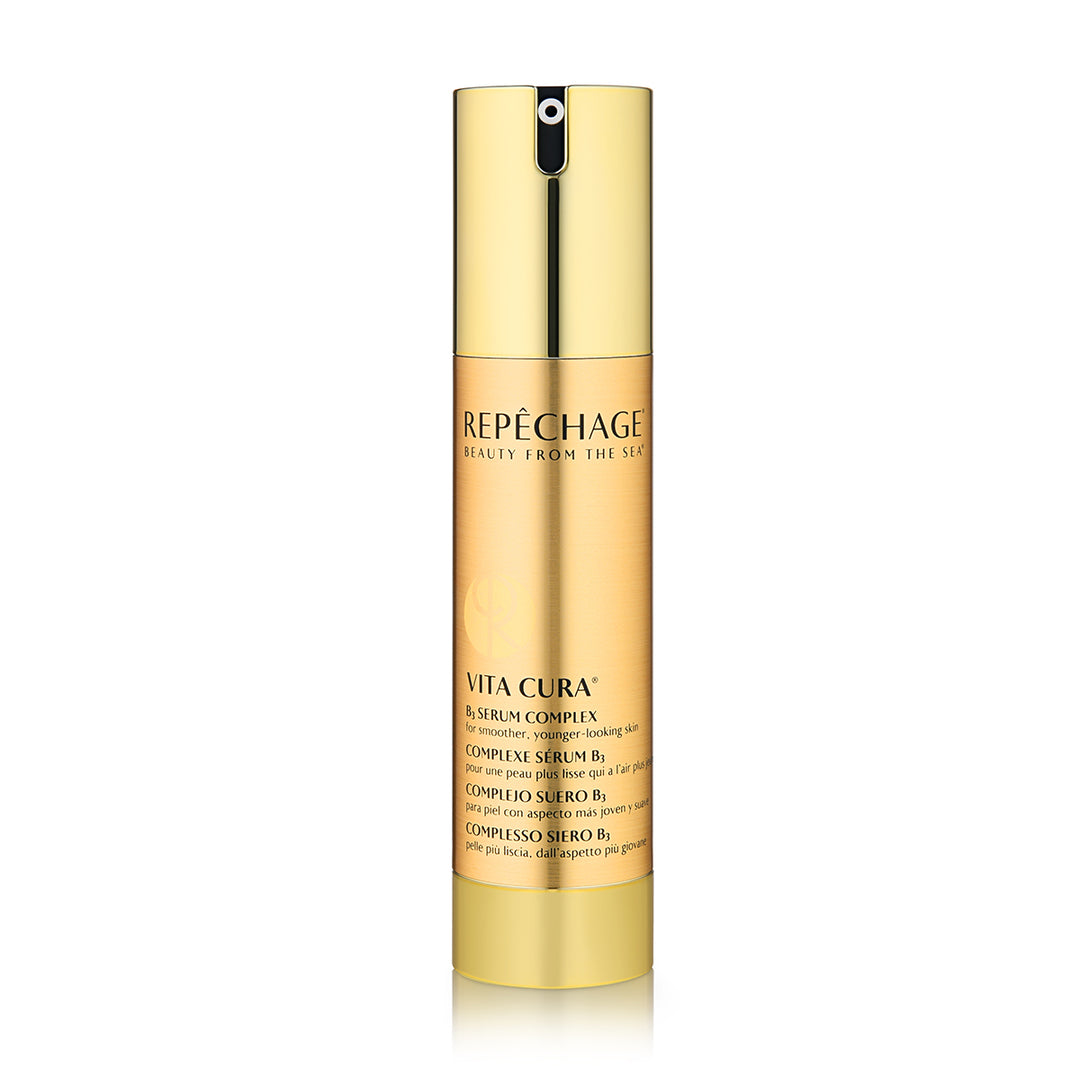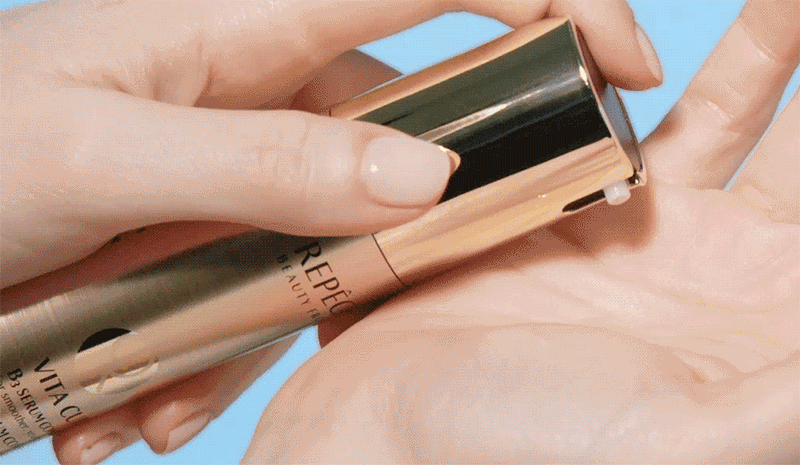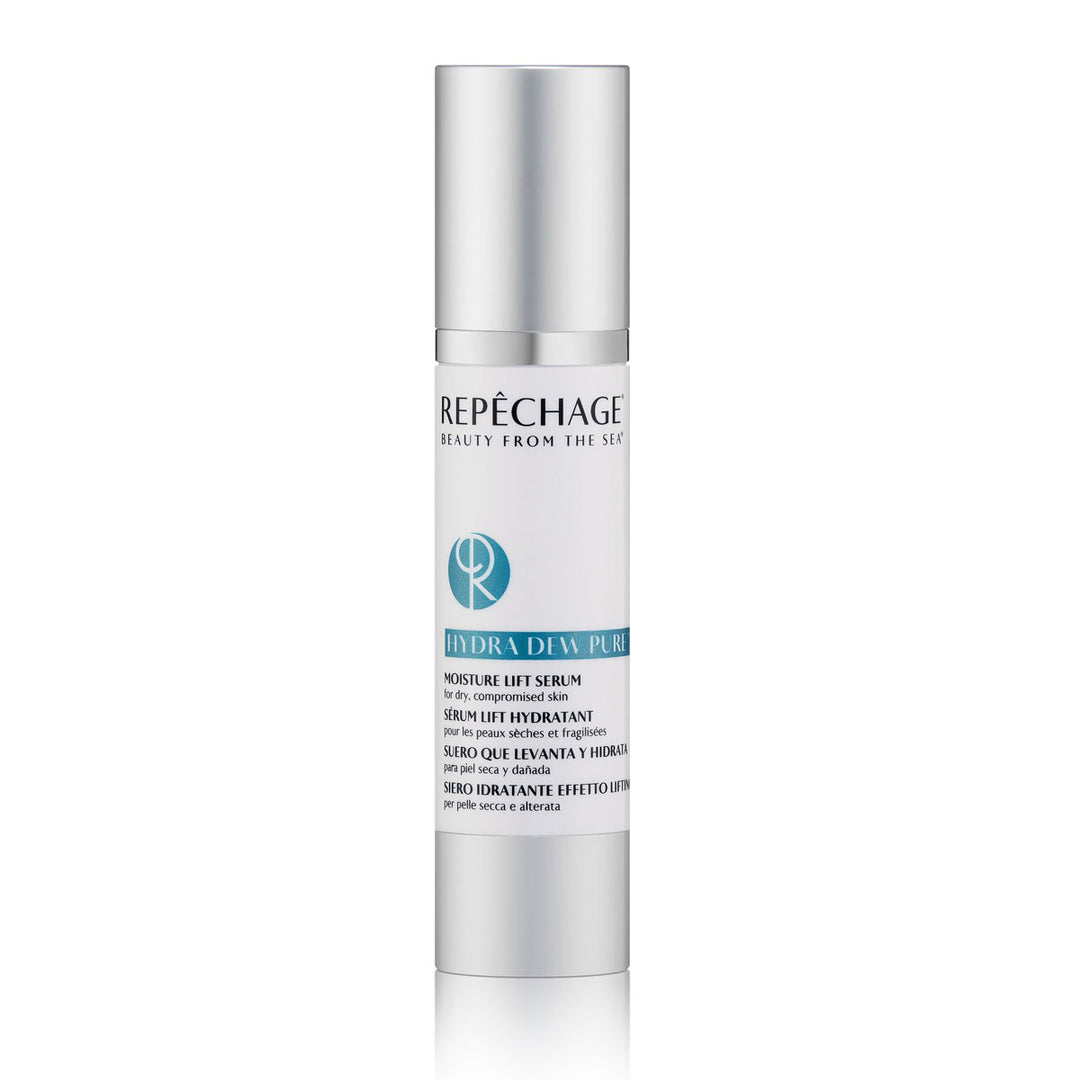Glowing Skin Secret: Double Down on Hyaluronic Acid
If you love beautiful, healthy, ageless-looking skin, you probably already know about Hyaluronic Acid. We've been talking about how much we love it for a while, and it continues to be one of the most popular skin care ingredients, and for good reason. Hyaluronic Acid (or HA) can be effective for all skin types, including dry, combination, mature and even sensitive skin. It is found in the cells of the human body, which makes many people perceive Hyaluronic Acid to be a natural alternative to ingredients and products that negatively impact the skin and the environment.
The news now is how doubling up forms of Hyaluronic Acid---using skin care that includes both heavier and lighter molecules of the ingredient---that can work even better with the skin to deeply moisturize.
Here, we’ll show you why Hyaluronic Acid is one of the most important ingredients you can use in your skin care program, and how doubling down can make it even better.

What is Hyaluronic Acid?
Allow us to geek out for a moment on HA: The key molecule involved in skin moisture is hyaluronan or hyaluronic acid or HA, which has a unique capacity to bind and retain water molecules. 50% of the Hyaluronic Acid found in the human body is found in the skin. Hyaluronic Acid is known to help keep skin moisturized, helps in the lubrication of joints, and helps to regulate several types of tissue repair. The hydration of the skin and the epidermal moisture barrier depend on the amount of Hyaluronic Acid in the dermis. But, as the body ages, Hyaluronic Acid decreases, leading to loss of moisture and elasticity, and contributing to the formation of lines and wrinkles.
One of the most important factors with HA now is that it belongs to what is called the extracellular matrix (ECM) molecules. In the past, research about skin has focused on the epidermis, the dermis and the underlying layers. The most recent research, however, has been on the ECM molecules that lie in between cells, because, in addition to providing a framework, they exert major effects on cellular function. Aging causes the ECM, comprised of elastin, fibrillin, and collagens, to degenerate, which in turn influences the skin’s moisture barrier.
Different Forms of HA
There are different forms of Hyaluronic Acid used in moisturizing serums, including Sodium Hyaluronate and Hydrolyzed Hyaluronic Acid.
Sodium Hyaluronate is the sodium salt of Hyaluronic Acid, and is the most common form, used in creams to help increase the moisture in the skin barrier. With this, skin is plumped and the appearance of wrinkles is greatly diminished.
Hydrolyzed Hyaluronic Acid has a lower molecular weight than Sodium Hyaluronate, so can penetrate deeper into the skin surface.
When different molecular weights of HA are used in a formulation they perform multiple skin care functions to enhance skin moisturization. The larger molecule HA creates a moisture barrier on the skin surface, while HA with smaller molecular weight penetrates a bit more deeply into the superficial skin layers, helping to prevent Trans Epidermal Water Loss---the migration of moisture from the deeper layers of the skin to the skin surface.

How to Double Down
You can find this powerful duo in skin serums that help boost skin’s moisture combined with other potent natural and bioadvanced ingredients.
Both forms of HA can be used in conjunction with powerful natural ingredients such as Laminaria Digitata Seaweed extract, a natural source of 12 vitamins, 18 amino acids and 42 trace elements.
For normal to combination skin, two forms of Hyaluronic Acid can be combined with Seaweed as well as skin balancing and soothing botanical ingredients such as St. John’s Wort, potent anti-oxidants such as Green Tea and Vitamin C, plus Niacinamide to help moisturize and reduce the appearance of pores.
Find them in: T-Zone Balance Hydrating Serum
For youthful, glowing skin, Seaweed can be combined with two forms of Hyaluronic Acid as well as boosted by anti-aging benefits of Peptides and Niacinamide (Vitamin B3) an ingredient known to help moisturize, as well as help reduce the appearance of pores, fine lines and wrinkles.
Find them in Vita Cura® B3 Elixir Complex
For dry and compromised skin, two forms of Hyaluronic Acid can be used with Seaweed extract and Mastic Gum Water, an ingredient from the Aegean Island of Chios, is known to help reduce dryness, as well as the appearance of fine lines and dark spots.
Find them in Hydra Dew Pure™ Moisture Lift Serum
What Hyaluronic Acid products do you like to use? Tell us in the comments!



